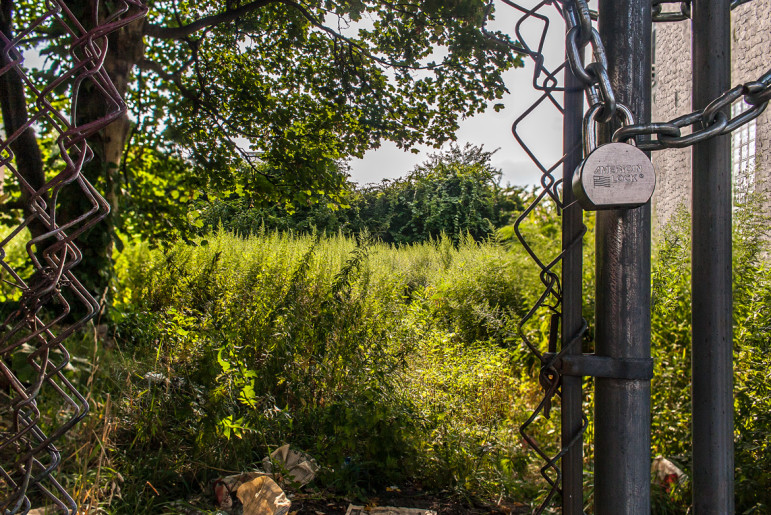
Adi Talwar
The lot at 22 Suydam Place in Brooklyn was planned as a park/playground in a 1968 master plan. Nothing ever happened
The city’s Department of Housing Preservation and Development has set a deadline for late next week for developers who want to build private homes, condos or small apartment buildings on one of 180 sites around the city.
But according to a citywide organization of community gardeners, 17 of those sites are “thriving, active community gardens.”
The New Infill Homeownership Opportunities Program and Neighborhood Construction Program are part of the de Blasio administration’s affordable housing push and “involve public sites located in neighborhoods across the City of New York that will be available for disposition.”
The current list of sites for development under the programs includes 17 in Queens, 18 in Manhattan, 26 in the Bronx and 122 in Brooklyn. HPD’s request for qualifications, released in December, calls for submissions by February 19.
City Limits reported in September that the city’s community gardeners were concerned the mayor’s affordable housing ambitions might conflict with their desire to preserve hard-won open spaces. That was before the RFQ was issued.
Today, the New York City Community Garden Coalition plans to rally against the RFQ. “Make no mistake, we are all in favor of affordable housing. Many of us would have a direct benefit from this proposal. Affordable housing and community gardens are compatible,” said the NYCCGC in a statement. “We advocate for more gardens and more housing. We do not understand how the selection process came about and why 17 active community gardens were selected as lots to be developed.”
Unlike Mayor Koch’s 1985 Ten-Year Plan for Housing, which in some ways was created to deal with a surplus of city-owned land, Mayor de Blasio’s 10-year plan to build or preserve 200,000 units of affordable housing is challenged by a lack of cheap, available land for new construction, which comprises 40 percent of the planned units.
Mayor Bloomberg’s 11-year housing blueprint ran into the same problem, and it’s one reason why that plan shifted from focusing on new construction to instead emphasize preserving housing that already existed.
When inexpensive land can’t be assembled for an affordable housing development, either the city must subsidize the project more generously or the rents in the new building have to be set higher to amortize the land cost. Since affordable housing rents are pegged to income, that means the project ends up serving a higher AMI (or area median income) level.
* * * * * *
UPDATE–February 11:>
The NYCCGC released this statement at its Tuesday rally:
As we gather here, the soil in our community gardens is laying dormant beneath heavy blankets of snow and ice.
But as gardeners, we cannot lay dormant. Actively engaged in ordering seeds for our 2015 crops, we don’t know who among us will be locked out of the community gardens, some of which have been tended for decades.
In the contested HPD RFQ that brings us here today, there are 181 lots slated for development. An exorbitant number –17 – are active community gardens. Mayor de Blasio recently said: “We have a duty to protect and preserve the culture and character of our neighborhoods, and we will do so.” Where is the concern for community, so absent in this pursuit, that the mayor claims is so necessary?
We demand that the mayor keep true to his stated quest of remedying the “Tale of Two Cities” that he inherited from the previous City administrations.
We demand that the mayor work alongside us, hand-in hand, to create a unified city. Unified by preserving our existing, active community gardens, and allowing our communities the space to create more community gardens as they see fit, alongside affordable housing that our neighbors and neighborhoods need most.
We insist that these are not mutually exclusive options. In fact, both are integral to a resilient and diversely unified city.
We insist that our communities and this great City need both!
Our position is that with both needs respected, we will build the unified city that we all aspire to!







